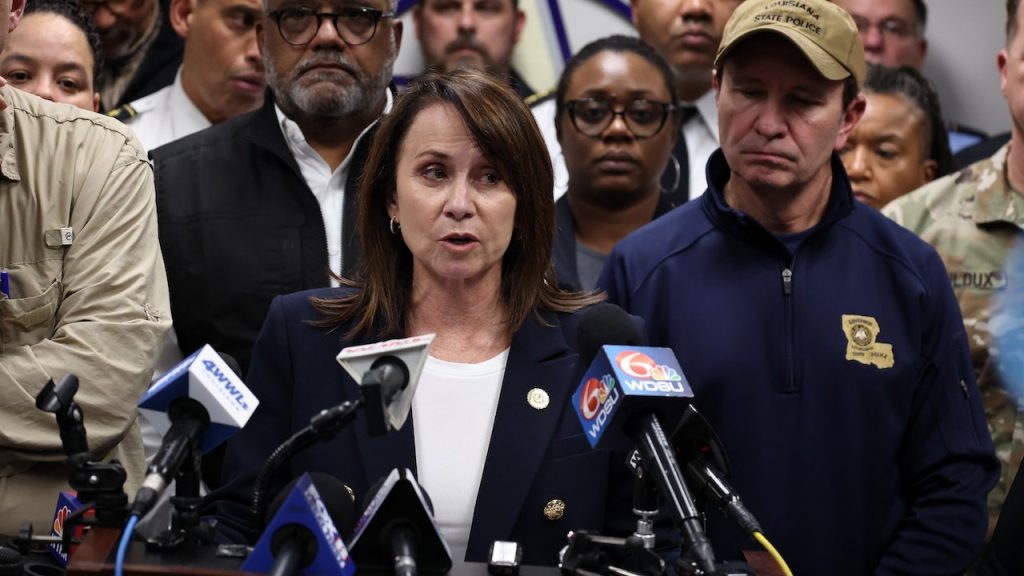The tragic New Year’s Day attack on Bourbon Street, which claimed the lives of 14 people and injured dozens more, has spurred a comprehensive review of security planning and procedures in New Orleans. Louisiana Attorney General Liz Murrill announced her intention to conduct a full review of the security measures in place during the Sugar Bowl and New Year’s Eve celebrations. This review stems from mounting concerns over whether city officials could have prevented the devastating incident, where Shamsud-Din Jabbar drove a truck through a crowd of revelers. The focal point of the investigation centers around the temporary barriers intended to prevent vehicle access to Bourbon Street. These barriers were reportedly lowered at the time of the attack, raising questions about the protocols and decision-making processes surrounding their deployment.
A key area of inquiry involves the status of the temporary metal barriers installed throughout the French Quarter in mid-November. These were intended as a temporary measure while the city transitioned from older bollards to new stainless steel bollards, a project slated for completion in January. The presence of temporary barriers instead of the permanent, more robust bollards has raised concerns about the adequacy of the security measures in place, particularly given the high-profile nature of the New Year’s Eve celebrations and the Sugar Bowl. The timing of the attack, coinciding with the ongoing bollard replacement project, emphasizes the need to examine whether the temporary measures provided sufficient protection against potential threats.
The review will likely delve into the official recommendations for securing the French Quarter, developed as part of a $2.3 billion infrastructure project initiated in 2017. These recommendations explicitly addressed the need to prevent mass casualty events, identifying the popular tourist area as a potential target for terrorism. The recommendations included a multifaceted approach to security, encompassing street cameras, a centralized command center, improved lighting, and the installation of high-quality bollards comparable to those used near U.S. government buildings. The investigation will assess the extent to which these recommendations were implemented and whether any gaps in security contributed to the tragedy.
Security experts, including former FBI official Bill Daly, have pointed to the temporary barricades as a potential vulnerability in the security plan. Daly emphasized that while temporary barricades are commonly used in scenarios like New York City’s Times Square New Year’s Eve celebrations, they must provide an equivalent level of security as permanent measures. He contrasted the concrete blocks and heavy vehicles used in Times Square with the seemingly less robust temporary barriers employed on Bourbon Street. This comparison highlights the importance of ensuring that temporary security measures offer comparable protection to their permanent counterparts, especially in high-risk areas.
The investigation into the Bourbon Street attack will not be limited to the Attorney General’s review. Members of the New Orleans City Council have also indicated their intention to conduct independent inquiries into the security arrangements in place on the morning of the attack. This multifaceted approach reflects the widespread concern and determination to understand the circumstances that led to the tragedy. Collaboration between the Attorney General’s office, the City Council, and other relevant authorities will be crucial to ensuring a thorough and comprehensive investigation.
Attorney General Murrill’s commitment to a transparent and collaborative review is evident in her communication with various officials, including City Council member Helena Moreno and District Attorney Jason Williams. Her intention to engage with additional stakeholders underscores the importance of gathering diverse perspectives to gain a complete understanding of the events leading up to the attack. The goal is to develop actionable recommendations to prevent similar tragedies in the future. This comprehensive review, encompassing security planning, implementation, and inter-agency communication, aims to provide a clear picture of the security landscape and identify areas for improvement to enhance safety and security in New Orleans.

